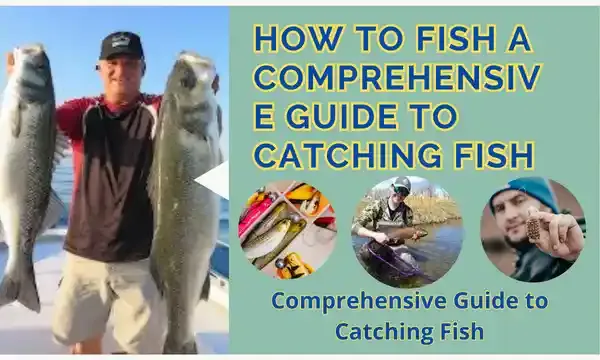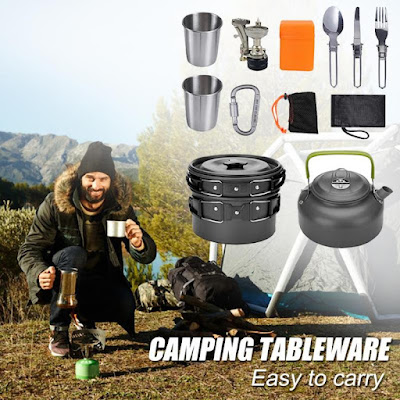Fishing is not just a recreational activity it is a skill that connects us with nature and provides a sense of adventure and relaxation. Whether you are a beginner or an experienced angler understanding the fundamental steps and techniques involved in fishing is crucial for a successful catch. In this essay we will explore the process of fishing covering essential aspects such as selecting bait and lures choosing the right fishing rod casting techniques hooking a fish and handling your catch. By following these guidelines you can enhance your fishing skills and increase your chances of reeling in that prized catch.
1-Selecting the Right Bait and Lures
Selecting the right bait and lures is essential to enticing fish to bite. Different fish species have varied feeding habits so understanding their preferences is key to successful fishing. Here are some factors to consider when choosing bait and lures:
Research the Target Species: Start by researching the specific fish species you intend to catch. Learn about their diet feeding patterns and preferred habitats. This knowledge will help you select bait and lures that closely resemble their natural prey.
Natural Bait Options: Natural baits are widely used in fishing and can include live bait or fresh cut bait. Worms minnows crickets and insects are common examples. Live bait mimics the movement and scent of natural prey making it appealing to fish. Make sure to use bait that is locally available and matches the fish species you are targeting.
Artificial Lures: Artificial lures come in a variety of shapes sizes and colors. They are designed to mimic the appearance and movement of prey effectively attracting fish. There are different types of lures including spoons spinners crankbaits soft plastics and jigs. Experiment with different lures to determine which ones are most effective for your target species and fishing conditions.
Consider Water Conditions: The water conditions such as clarity temperature and depth play a significant role in bait selection. In clear water lures that closely resemble natural prey and have a realistic appearance tend to work well. In murky water lures with a strong vibration or bright colors can help fish locate them. Adjust your bait and lure selection based on the specific conditions of the water you are fishing in.
Match the Hatch: "Matching the hatch" refers to selecting bait or lures that resemble the predominant food source available to the fish at a given time. Observe the insects or other small creatures present in the area and choose baits or lures that imitate their appearance and behavior. This technique can be particularly effective in fly fishing when imitating the insects hatching on the water surface.
Experiment and Adapt: Fishing can be unpredictable, and what works one day may not work the next. It's important to experiment with different bait and lure combinations until you find what works best for your target species and fishing location. Keep a variety of options in your tackle box and be willing to adapt to changing conditions or fish preferences.
Pay Attention to Seasonal Changes: Different seasons can bring changes in fish behavior and feeding patterns. During spawning seasons for example fish may be more aggressive and respond better to certain types of lures. Understanding these seasonal variations can help you choose the right bait and lures for optimal results.
Seek Local Knowledge: If you are fishing in a new area, consider seeking advice from local anglers or visiting a bait and tackle shop. Local knowledge can provide valuable insights into the most effective bait and lure choices for the area as they are familiar with the fish species and their feeding habits.
Remember the key to selecting the right bait and lures is to replicate the natural food sources and trigger the fish's predatory instincts. By considering the target species, water conditions seasonal changes and local knowledge you can increase your chances of enticing fish to bite. It's also important to keep an open mind be willing to try new approaches and adapt your bait and lure selection based on the feedback you receive from the fish. Ultimately through practice and experience you will develop a better understanding of what works best in different fishing situations.
2- Assessing the Water and Identifying the Best Spots
maximize your chances of a successful fishing trip it's essential to assess the water you are fishing in and identify the best spots where fish are likely to be present. Here are some key considerations when assessing the water and selecting fishing locations:
Research the Waterbody: Before heading out to fish gather information about the waterbody you plan to fish in. Look for details such as the type of water (lake river pond etc.) its size depth and any known fish species that inhabit it. Online resources local fishing reports and guidebooks can provide valuable information about the waterbody and the fish it holds.
Observe the Water Conditions: Assessing the current water conditions is crucial. Factors such as water temperature clarity and flow rate can significantly impact fish behavior. Some species prefer warmer water while others thrive in colder temperatures. Clear water may require more subtle bait presentations while in murky water fish rely more on their sense of vibration and smell. Understanding these conditions helps you make informed decisions about bait and technique selection.
Look for Cover and Structure: Fish are attracted to areas with cover and structure that offer protection and opportunities for ambush. Fallen trees, submerged logs overhanging branches weed beds and rock formations are all potential hotspots. These structures provide shade hiding places and opportunities for fish to feed on smaller prey. By casting near these areas you increase your chances of encountering active fish.
Pay Attention to Currents and Edges: Fish are often found near areas where two different types of water meet such as the junction of a river and a lake or where a current flows into a calm area. These transition zones create natural feeding opportunities for fish. Additionally pay attention to the direction and strength of the current as fish tend to position themselves strategically to conserve energy while waiting for prey to come to them.
Consider Time of Day and Season: Fish behavior can vary depending on the time of day and the season. Some species are more active during specific periods such as dawn or dusk while others may be more active during certain seasons. Understanding these patterns can help you plan your fishing trips and target the right areas at the right times.
Learn from Local Anglers: Local anglers who have experience fishing in the area can provide valuable insights. Strike up conversations join fishing forums or clubs or visit local bait and tackle shops to gather information about productive fishing spots and techniques. They can offer tips on where to fish what bait to use and any specific regulations or restrictions you need to be aware of.
Stay Observant on the Water: Once you're on the water, be observant of any signs of fish activity. Look for fish jumping splashing or feeding on the surface. Birds diving into the water can also indicate the presence of baitfish which in turn can attract larger predatory fish. Pay attention to any signs of underwater movement ripples or disturbances that may suggest fish activity in a particular area.
3- Preparing Your Fishing Rod and TacklePreparing your fishing
rod and tackle is essential to ensure you have the right equipment for the fishing experience you seek. Properly selected and maintained gear can significantly enhance your chances of success. Here are some key aspects to consider when preparing your fishing rod and tackle:
Selecting the Right Fishing Rod: Fishing rods come in various types lengths and actions each designed for specific fishing techniques and target species. Consider the type of fishing you plan to engage in such as freshwater or saltwater casting or spinning and the size of the fish you expect to catch. Match the power and action of the rod to the targeted species to ensure adequate strength and sensitivity.
Choosing the Appropriate Fishing Reel: Fishing reels are available in different designs including spinning reels baitcasting reels and fly reels. The choice of reel depends on your fishing style and the rod you are using. Spinning reels are versatile and easy to use making them suitable for beginners. Baitcasting reels offer greater casting accuracy and control preferred by experienced anglers. Fly reels are specific to fly fishing where the line weight plays a crucial role.
Selecting Fishing Line: Fishing lines come in various materials, such as monofilament fluorocarbon and braided lines. Each type has its advantages and is suitable for different fishing scenarios. Monofilament lines are versatile and budget-friendly while fluorocarbon lines have low visibility underwater. Braided lines offer high strength and sensitivity but may require a leader for certain fishing applications. Consider the fishing conditions target species and personal preference when selecting the appropriate fishing line.
Choosing Hooks Sinkers and Floats: Hooks are available in different sizes and designs such as bait hooks circle hooks or treble hooks Choose the appropriate hook size and style based on the target species and the bait you are using. Sinkers and floats help in adjusting the bait's depth and presentation. Use sinkers to add weight to your rig, keeping the bait at the desired depth. Floats can help suspend the bait at a specific depth or indicate when a fish bites.
Rigging Your Tackle: Rigging refers to assembling and arranging the different components of your tackle. Tie knots securely to attach hooks, swivels and other terminal tackle. Learn essential fishing knots like the improved clinch knot or the palomar knot for reliable connections. Proper rigging ensures that your tackle functions effectively and prevents line breaks or lure loss during fishing.
Checking and Maintaining Equipment: Before each fishing trip inspect your fishing rod reel and tackle for any signs of damage or wear. Check for cracked guides loose reel seats or damaged lines. Ensure that your reel is properly lubricated and the drag system is functioning correctly. Clean and organize your tackle box removing any rusty or damaged hooks and replenish your supply of fishing line hooks and sinkers as needed.
Carrying Essential Accessories: In addition to your rod reel and tackle consider carrying essential accessories that can enhance your fishing experience. These may include a fishing hat sunglasses sunscreen pliers a fish gripper a fishing net a first aid kit and a tackle box organizer. These items can help protect you from the sun assist in handling fish and address any unexpected situations while on the water.
Adapting to Fishing Conditions: As you prepare your fishing gear keep in mind the specific fishing conditions you expect to encounter. Adjust your tackle selection based on factors such as water depth clarity and the target species' behavior. Lighter lines and smaller hooks may be suitable for clear water and finicky fish while

4- Mastering the Casting TechniqueMastering the casting
technique is crucial for successful fishing. A well-executed cast allows you to place your bait or lure accurately and efficiently in the desired fishing spot. Here are some key aspects to consider when mastering the casting technique:
Grip and Stance: Start by holding the fishing rod with a comfortable grip. Place your dominant hand above the reel seat and your non-dominant hand below it. Maintain a relaxed grip that allows for fluid movement. Stand with your feet shoulder-width apart facing your intended casting direction. Distribute your weight evenly to maintain balance and stability.
Backcast: Begin by positioning your lure or bait a few feet above the water surface. Hold the rod tip at about the 1 o'clock position slightly tilted behind you. Smoothly move the rod backward using your forearm and wrist while keeping your elbow close to your body. As you do this, release the fishing line from the reel allowing it to flow freely.
Forward Cast: Once the rod is fully extended backward, transition into the forward cast. Propel the rod forward using a swift and controlled motion leading with your forearm and wrist. Aim for a smooth and fluid movement avoiding any jerky or abrupt actions. As you reach the forward position snap your wrist to release the line propelling the bait or lure toward your target.
Timing and Power: Timing is crucial in casting. The release of the line should coincide with the forward motion of the rod. Practice the timing to achieve a seamless transition from the backcast to the forward cast. Additionally the power behind the cast depends on the distance you want to achieve. For shorter casts, use less power and for longer casts increase the power while maintaining control.
Casting Arc and Trajectory: Visualize a smooth arc as you cast. The casting arc should be high enough to generate sufficient line speed but not excessively high as it may cause line tangling. Aim for a trajectory that delivers the bait or lure accurately to your desired target. Adjust the casting angle and trajectory based on wind conditions obstacles and the distance you want to cast.
Practicing Accuracy: Accuracy is vital in fishing, especially when targeting specific areas or structures. Set up targets such as floating markers or buckets at different distances and practice casting accurately towards them. Focus on hitting the targets consistently to improve your accuracy and precision.
Adjusting for Wind: Wind can affect your casting distance and accuracy. When casting against the wind tilt the rod slightly downward to minimize wind resistance. Increase the power behind the cast to counteract the wind's effect. Conversely when casting with the wind you may need to reduce the power and adjust your casting angle to prevent the line from blowing back.
Practicing Different Casting Techniques: Expand your casting skills by practicing different techniques. Experiment with overhead casts sidearm casts roll casts and pitching. Each technique has its advantages depending on the fishing situation. Practice these techniques to become versatile and adaptable in various fishing scenarios.
Safety Considerations: When casting be mindful of your surroundings and the presence of other anglers. Ensure there is enough space to cast freely without risking injury to yourself or others. Be aware of any obstacles such as trees rocks or structures that may interfere with your cast.
Consistent Practice: Like any skill mastering the casting technique requires practice and repetition. Dedicate regular time to practice your casting in different fishing environments and conditions. As you continue to practice you will develop muscle memory and improve your casting accuracy distance and control.
Remember mastering the casting technique takes time and patience. It's essential to start with the basics and gradually build your skills through consistent practice
5-Hooking and Landing the FishHooking and landing the fish is
the thrilling culmination of your fishing efforts. It requires finesse technique and the ability to react quickly and decisively. Here are some important aspects to consider when it comes to hooking and landing the fish:
Setting the Hook: When you feel a bite or see a fish strike it's crucial to set the hook properly to secure the fish. This involves quickly and firmly pulling the rod tip upward or sideways depending on the fishing technique and target species. A proper hook set drives the hook into the fish's mouth increasing the chances of a solid connection.
Timing and Patience: Timing is essential when setting the hook. It's important to wait until you feel a steady pull or see the fish turn away with your bait or lure before setting the hook. Premature hook sets can result in missed opportunities. Additionally it's crucial to remain patient and avoid yanking the rod at the slightest nibble as some fish may initially mouth the bait before committing fully.
Fighting the Fish: Once the fish is hooked it will often put up a spirited fight testing your skills as an angler. Maintain a balanced stance and a firm grip on the rod while allowing the fish to run if necessary. Use the rod's bend and reel in line when the fish pauses or begins to tire. Avoid applying excessive pressure as it can cause the line to break or the hook to pull free.
Rod Control: Controlling the rod during the fight is crucial to maneuvering the fish and keeping it from escaping. Keep the rod at a moderate angle to maintain tension on the line, preventing the fish from shaking the hook loose. Use smooth and controlled movements to guide the fish away from obstacles such as rocks weeds or submerged structures that may result in a lost fish.
Reeling Techniques: Proper reeling techniques play a vital role in landing the fish successfully. Maintain a steady and consistent reeling rhythm taking up line when the fish is not actively running. Avoid reeling too quickly as it can cause the hook to dislodge or the line to tangle. Use the reel's drag system to apply gentle and consistent pressure on the fish while allowing it to make controlled runs.
Playing Large Fish: When targeting larger fish species it's important to exercise caution and adapt your approach accordingly. Large fish have more strength and may require a longer fight. Apply steady pressure but be prepared to give the fish line if it makes powerful runs. Patience and persistence are key when playing and eventually landing larger fish.
Use a Landing Net: To increase your chances of successfully landing the fish consider using a landing net. Landing nets provide a secure means of bringing the fish closer to you while minimizing the risk of it shaking the hook free. Choose a net with a soft mesh that won't harm the fish's protective slime coating. Gently guide the fish into the net keeping it submerged to prevent injury.
Practice Catch and Release: If practicing catch and release fishing, handle the fish with care to ensure its survival after release. Wet your hands before touching the fish to minimize the removal of its protective slime. Avoid squeezing or applying excessive pressure on the fish as it can cause internal injuries. If possible keep the fish in the water while removing the hook and quickly release it back into its natural habitat.
Be Prepared: Have the necessary tools readily available for hook removal and fish handling. Carry a pair of needle-nose pliers or a hook remover to facilitate safe hook removal. Additionally a fish gripper or lip gripper can provide a secure hold on the fish while minimizing stress and potential injuries.
Practice Ethical
Fishing: Adhere to local fishing regulations and guidelines. Respect catch limits size restrictions and protected species. As responsible anglers we play a crucial role in preserving fish populations and their habitats for future generations.
By understanding the principles of hooking and landing fish and practicing proper techniques you can increase your chances of successfully bringing the fish to the shore or boat. Remember to respect the fish practice ethical fishing and enjoy the thrill of the catch.
6- Handling and Releasing Your CatchHandling and releasing
your catch properly is essential for the well-being and conservation of fish populations. By following appropriate practices you can minimize stress and injury to the fish increase their chances of survival and contribute to sustainable fishing practices. Here are some key aspects to consider when handling and releasing your catch:
Minimize Handling Time: When you land a fish aim to minimize the time it spends out of the water. Extended exposure to air can cause stress and damage to the fish's delicate gills. Prepare your equipment in advance such as having a landing net pliers and camera ready to facilitate efficient and swift handling.
Wet Your Hands: Wet your hands before touching the fish to prevent removing its protective slime coat. This slime helps protect the fish from infections and parasites. Dry hands can remove this protective barrier making the fish more vulnerable to diseases. By keeping your hands wet you reduce the chances of harming the fish.
Handle with Care: When handling the fish do so with gentleness and care. Avoid squeezing or applying excessive pressure as it can injure internal organs or cause unnecessary stress. Support the fish's body properly especially large fish, by cradling it with both hands. Avoid holding the fish by its gills or applying excessive force on its jaw.
Remove the Hook Safely: If you plan to release the fish it's crucial to remove the hook carefully. Use needle-nose pliers or a hook remover to facilitate safe hook removal. Grasp the hook firmly but gently and back it out in the same direction it entered. Avoid yanking or twisting the hook as it can cause additional injury to the fish.
Minimize Air Exposure: While removing the hook try to keep the fish in the water as much as possible. If you need to lift the fish for hook removal or a quick photo do so close to the water's surface. Avoid holding the fish too far above the water as it can put strain on their organs and reduce their chance of survival.
Revive the Fish: After hook removal if the fish appears exhausted or disoriented take the time to revive it before releasing. Hold the fish gently in the water facing it into the current if possible. Move it back and forth to allow water to pass over its gills and help oxygenate its system. Once the fish shows signs of strength and responsiveness release it gently and watch it swim away.
Use Fish Grippers: Fish grippers or lip grippers can be valuable tools for handling fish safely. These devices allow you to secure the fish by its lower jaw without causing harm. They provide a secure hold on the fish making it easier to remove the hook take quick measurements or photos and release the fish without excessive handling.
Practice Selective Harvesting: If you plan to keep some fish for consumption, practice selective harvesting. Follow local regulations regarding size limits bag limits and protected species. Consider releasing larger breeding fish to maintain healthy populations. By practicing selective harvesting you contribute to sustainable fisheries and preserve the balance of fish populations.
Observe Proper Release Techniques: When releasing the fish ensure that it has fully revived and regained its strength. Avoid tossing the fish back into the water or letting it fall from a significant height as it can cause injuries upon impact. Gently place the fish in the water and allow it to swim away at its own pace.
Educate Others: Share your knowledge and passion for responsible fishing with others. Encourage fellow anglers to adopt proper handling and release practices. By spreading awareness and promoting responsible fishing ethics we can collectively contribute to the conservation of fish populations and their








